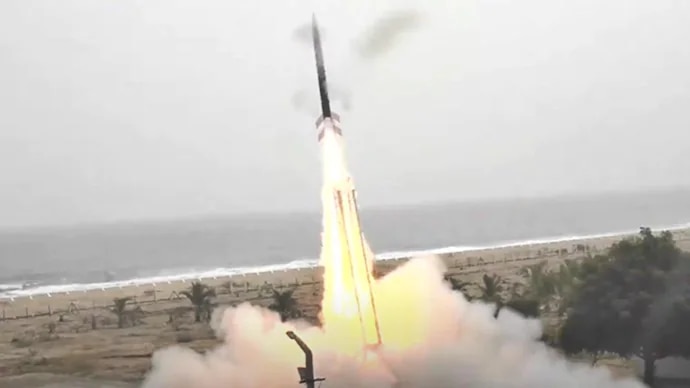2 years, 200 engineers: Vikram-S, India's first private rocket, takes off

Vikram-S's success is a green flag for the future Vikram projects by Skyroot Aerospace (photo-DailyO)
Vikram-S, India's first privately-developed rocket lifted off successfully from Sriharikota's ISRO launch pad at 11.32 am today. Named after the founding father of India's space programme Vikram Sarabhai, the rocket was launched by Hyderabad-based aerospace manufacturer and commercial launch provider Skyroot Aerospace.
Launched! Vikram-S makes history as the first private rocket of India to grace the skies. We thank you all for being with us for this momentous occasion. More details of flight to follow. Keep watching https://t.co/p2DOuRFiIA#Prarambh #OpeningSpaceForAll pic.twitter.com/jm4u6mJhsL
— Skyroot Aerospace (@SkyrootA) November 18, 2022
As the rocket attained the expected peak altitude of 89.5 km, Skyroot tweeted,

Crossing speeds of Mach-5, the rocket is expected to splash back safely in the Bay of Bengal (about 130 km from surface).
“We made history today by launching India’s first private rocket. It is a symbol of new India, and just the #Prarambh of a great future.” Pawan Kumar Chandana, Co-Founder Skyroot Aerospace. Keep watching https://t.co/p2DOuRFiIA#Prarambh #OpeningSpaceForAll
— Skyroot Aerospace (@SkyrootA) November 18, 2022
What is the aim of Vikram-S’s launch? Vikram-S’s liftoff as a part of a mission titled Prarambh is meant to serve as a prelude for Skyroot’s further launches.

In other words, the rocket is meant to test the required tech systems ahead of the launch of the upcoming Vikram-1 that is to be launched next year. Features like GPS tracking, camera, and data acquisition were also tested.
What kind of rocket is it? Vikram-S is a suborbital rocket, implying that it can reach outer space but not orbit the planet. With a payload capacity of 83 kg at 100 km altitude and a length of approximately 27 ft, the rocket’s total mass amounts to 546 kg.

Skyroot suggests that Vikram-S is one of the cheapest rockets of its kind.
What went into its construction? The rocket was built in a span of two years with a team of over 200 engineers. As for its materials, the rocket boasts an all-carbon fibre core structure and its thrusters were 3D printed.
The past and present of Skyroot: Interestingly, Skyroot was founded by two ex-ISRO engineers, 31-year-old Pawan Kumar Chandana and 32-year-old Naga Bharat Daka in 2018. Since then, the company has raised $68 million in funding.

And with ISRO actively supporting the private aerospace venture as seen in today’s launch, Indian space missions seem to have a brighter future with a mix of state-sponsored and private projects.

